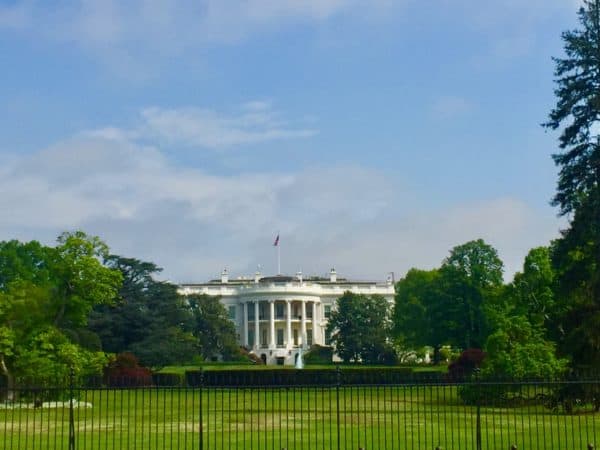Recent cryptocurrency-related moves from Washington generated mixed reactions from industry insiders. Some moves were more important than the markets may think, while others lacked substance.
SPACE ID director of business development Harrison Seletsky said that despite the market’s tepid reaction to the crypto reserve announcement, the reserve is still a pivotal step.
“Expectations were running high ahead of Friday’s White House Crypto Summit, but the aftermath was somewhat anticlimactic,” Seletsky said. “The market didn’t react with as much excitement since the US is currently holding their confiscated BTC instead of actively buying more. However, there’s a lot more to be excited about than the market is pricing in.”
Seletsky said it’s encouraging to see that Trump signed an executive order for a crypto reserve – whatever it may look like in practice – but we’re also seeing this conversation moving ahead at the state level. Before the summit, Texas passed a law allowing it to establish a state-controlled crypto reserve, consisting of Bitcoin and other digital assets. Seletsky said that was unthinkable only one year ago.
He believes Texas’s move could spur other states and municipalities worldwide to copy it. State-level initiatives like this will prompt broader adoption and integration of digital assets into financial portfolios by local institutional investors, such as pension funds.
“These state crypto reserves are an important step toward mainstream crypto adoption in the US and abroad, even if the markets have shrugged the news off as not yet noteworthy,” Seletsky said.
Impossible Cloud Network co-founder Kai Wawrzinek saw little more than hot air come from the White House crypto summit, calling it an “exemplary exercise in public relations.”
“While promising great change for crypto, the US President delivered almost nothing,” Wawrzinek said. “The lauded Bitcoin reserve will consist of Bitcoin the government already owns, while the alternative tokens that Trump strangely tweeted about before mentioning Bitcoin will be put under ‘consideration’ for inclusion. However, in truth, the latter is perhaps no bad thing considering the very different functions of these coins compared to Bitcoin.”
On the face of things, Wawrzinek said Trump has kept his promise to the crypto industry with the creation of this reserve, but whether that repays the contribution it made to him winning the election is questionable. He added that crypto poured over $245 million into election coffers, accounting for half of all corporate funding.
“With no solid plans to buy further coins mentioned, and indeed with Trump emphasizing that the taxpayer would not contribute a single penny to any such endeavor, a reserve of coins already in reserve seems like a thin deal,” Wawrzinek said.
Perhaps there’s a nugget of hope in Trump’s statement that Uncle Sam will never sell its holdings, but overall, Wawrzinek saw the summit as “lip service paid to a promise made to win an election”
deVere Group CEO Nigel Green said Bitcoin’s post-strategic-reserve announcement drop has been misinterpreted.
“The market’s reaction betrays a short-sightedness that will likely be corrected as investors digest the broader implications of the move,” Green said. “Investors should be focusing on that this executive order makes it more likely Bitcoin will be a geopolitically significant asset in the future.”
Green added that Bitcoin advocates have long argued that it would evolve beyond a speculative asset into a cornerstone of sovereign financial reserves. That vision is now being actively realized.
By establishing a strategic reserve, Green said the US has legitimized Bitcoin’s status in global finance. While the immediate disappointment stems from the fact that the government isn’t purchasing additional bitcoin, the more profound development is that the world’s largest economy has formally integrated the asset into its state-held reserves.
Green also believes other nations will soon follow suit.
“Countries with a history of accumulating alternative assets, such as gold, may view this as a cue to diversify further into digital assets. Sovereign wealth funds, central banks, and institutional investors will all take notice,” Green said. “A government that holds bitcoin in reserve has a vested interest in ensuring that the asset is not only viable but also protected from draconian restrictions.”
“This could accelerate the implementation of clearer, more favorable regulations. Instead of fearing the executive order, investors should consider what it signals: Bitcoin is not going away. It is being adopted at the highest levels of economic planning.”
SMARDEX co-founder Jean Rausis said the US government is rushing out the GENIUS Act to regulate stablecoins because it acknowledges that stablecoins are a great source of demand for the US dollar. The vast majority of stablecoins are USD-denominated, which effectively means the entire crypto ecosystem runs on USD. So punishing the issuers of stablecoins is simply dumb.
“Equally, the government realizes that if they control stablecoins, they control financial transactions,” Rausis noted. “Working with centralized stablecoin issuers means they can freeze funds anytime they want, which is essentially what a CBDC would allow.”
“So why bother creating a CBDC? With stablecoins under the government’s control, the result is the same, with the false veneer of decentralization added as a bonus.”
Rausis stressed that the US government will only support centralized stablecoin issuers that are fully under its control. Like MiCA, which has been causing so many headaches for Tether in the EU, the GENIUS Act will reward those that comply, and punish those that don’t.
“For users concerned with privacy, meanwhile, this only reinforces the case for using decentralized alternatives,” Rausis concluded. “This is the only option that can give individuals control over their own financial assets, with governments and regulators increasingly tightening their grip.”



